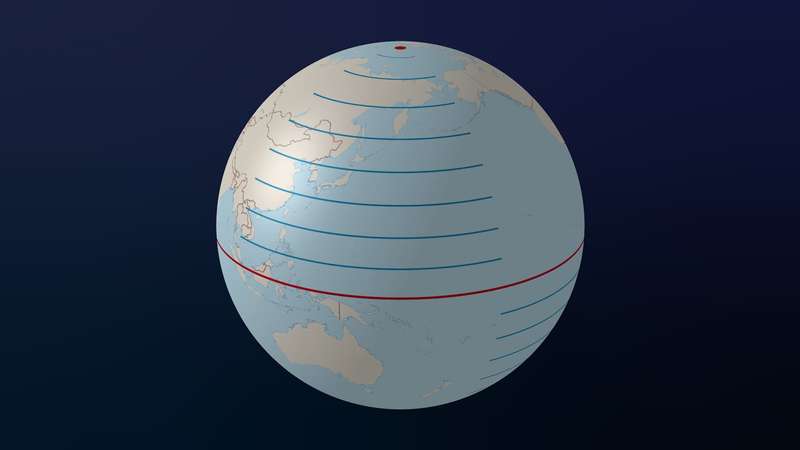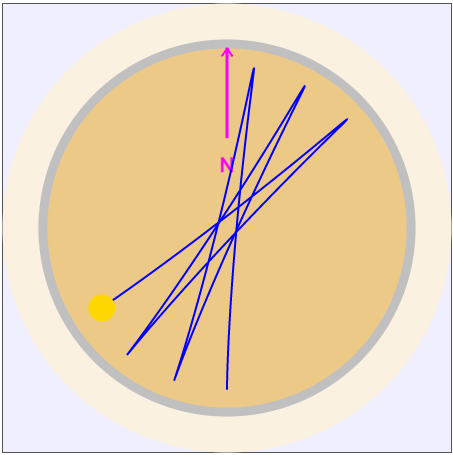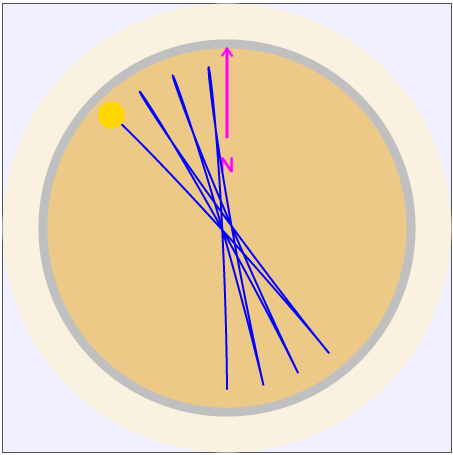
Portions of latitude circles on the Earth. Circles at higher latitudes (near the poles) are smaller, while those at lower latitudes (near the equator) are larger. (image credit: Encyclopedia Brittanica)
Precession is more complicated if the pendulum is not located at one of the poles. It is still possible, though, to gain an intuitive understanding for what happens. First, it is important to understand that each point on the Earth moves in a circle toward the east as the Earth rotates (below). Each point completes its circular motion in one sidereal day, but the SIZE of the circle depends on the latitude of the point. Locations near the equator move in larger circles while those near the poles move in smaller circles. Since all points complete their motion in the same time, points closer to the poles must be moving slower and those closer to the equator must be moving faster.

Consider what happens if a pendulum is located at a mid-latitude (say, on Berry's campus at 35 degrees North). Suppose that the pendulum is displaced to the south and then released. When the pendulum is first released it is at rest relative to the point on Earth directly below the bob. Therefore, the pendulum bob is actually moving eastward at the same speed as the point on Earth directly below. As the pendulum swings it will move toward the North. This northward motion brings the pendulum over points on the Earth that are closer to the North pole. Since these points move eastward at a slower rate, the pendulum (which maintains the eastward motion it started with) will outrun these points and move farther to the east than those points on the ground. For an observer standing on the Earth, this eastward deflection of a north-swinging pendulum appears as a motion that curves slightly to the right.
When the pendulum swings to the south it moves over points on Earth's surface that are moving faster, so the pendulum will lag behind a bit. This results in a westward deflection. Again, to an observer on the Earth the westward deflection of a southward-moving pendulum will appear as a motion curving to the right. As the pendulum oscillates back and forth it will continue curving slightly to the right and as a result the pendulum's plane of oscillation will precess clockwise.


If the pendulum is in the southern hemisphere then the situation is reversed. Motion toward the north brings the pendulum closer to the equator where the Earth's surface is moving faster, so the pendulum will lag behind (to the west), resulting in a leftward curve as seen by an Earth-bound observer. Motion toward the south takes the pendulum closer to the South pole where the surface is moving slower and thus the pendulum runs ahead (to the east), again producing a leftward curve in the pendulum's swing as seen by an observer on Earth. This continual leftward curve leads to a counterclockwise precession.